Topics
Category
Era
Glensheen Historic Estate
Glensheen, a mansion and grounds completed in 1908 on the shores of Lake Superior in Duluth, was built by Chester and Clara Congdon. It is famous for its beauty inside and out, and as the site of one of Minnesota’s most notorious murders.
Chester Congdon and Clara Bannister, children of Methodist ministers, met at Syracuse University in New York in 1871. They married and moved to St. Paul ten years later. After a slow start, Chester prospered in the law and took to real estate speculation, mostly in the Pacific Northwest. Overall, he lost money on his investments.
The family moved to Duluth in 1892 when Chester saw opportunity in the booming city and the newly industrializing Mesabi Iron Range. As a lawyer for the Oliver Iron Mining Company, he grappled with Andrew Carnegie and J. D. Rockefeller—a competition that drew national attention to Minnesota—and made millions of dollars. In 1901, he formed the Chemung Iron Company and made millions more.
In 1903, the Congdons chose land three miles from downtown Duluth, facing Lake Superior, for a new residence. To design the house and grounds they selected Clarence H. Johnston (1859–1936), Charles Wellford Leavitt (1871–1928), and William A. French (1863–1942.)
Johnston, designer of many Summit Avenue mansions, produced a thirty-nine-room giant in the Jacobean Revival style that mimicked English country houses from four centuries earlier. The outside appearance is elegant: an asymmetrical mass of brick, with granite trim and prominent gables. Johnston and the Congdons paid close attention to infrastructure; the estate had its own reservoir, a coal delivery system, and central humidification.
Leavitt, from New York City, designed the grounds. He included formal gardens, lakeside terraces, a bowling green, walking paths and footbridges, more than thirty species of trees, and thousands of shrubs.
The name “Glensheen” reflects the site. Glen, a Scots word for a narrow valley, refers to the ravines of Tischer Creek and Bent Brook, which frame the estate; “sheen” either comes from Sheen, the Congdons’ ancestral village in England, or from the reflection of light off the lake.
Glensheen’s design star is French, a St. Paul interior decorator and designer. With the Congdons, he chose fine materials: silver for light fixtures, gold leaf for ceilings, oak and walnut woodwork, and Algerian marble. He used both art nouveau and Arts and Crafts styles, which were lighter and more elegant than the busy interiors of late-nineteenth-century mansions.
The interior features hand-carved railings and art-glass windows. The dining room and library overlook the terrace and garden below and Lake Superior beyond. The breakfast room, designed by John Bradstreet of Minneapolis, is considered a highlight for its green tiled walls and floors, as well as for its lake views.
Despite Glensheen’s luxury and size, architectural historian Larry Millett finds it “warm and livable,” with “a surprising sense of intimacy.” Because the house remained in the Congdon family until 1978, little has changed over time. Millett calls it the most intact house of its kind in Minnesota.
Chester Congdon died in 1916, without completing his vision for a highway linking Duluth to Canada; it opened in 1923 as North Shore Scenic Drive. Clara lived in Glensheen until her death in 1950. Their daughter Elisabeth, the last of their seven children to die, lived there for the rest of her life. She never married but adopted two daughters, Marjorie and Jennifer, in 1932.
On the night of June 26, 1977, Elisabeth Congdon and her nurse, Velma Pietila, were murdered by an intruder. Suspicion fell on Marjorie and her husband, Roger Caldwell. Marjorie had lived a troubled life and, before the murder, demanded money from Elisabeth. Caldwell was convicted of the murder in 1978; Marjorie was acquitted in 1979.
The Minnesota Supreme Court reversed Caldwell’s conviction in 1983. In return for a sentence of time served, Caldwell admitted to the murders but refused to implicate his then ex-wife, Marjorie. He took his own life in 1988. Though Marjorie inherited part of the Congdon fortune, her life remained troubled. Her third husband died a suspicious death, and she served time in an Arizona prison for arson.
Prior to the murder in 1969, the Congdon family willed Glensheen to the University of Minnesota–Duluth. It opened as a museum in 1979 and has become one of Minnesota’s top historic tourist attractions.
Bibliography
Berini, Nancy. “Glensheen in a New Light.” Lake Superior Port Cities 4, no. 1 (1982): 29–44.
Dierckins, Tony. “Building the Fortune That Built Glensheen: Chester Congdon and America’s Robber Barons.” Zenith City, May 1, 2015.
Hartman, Dan. “A Legacy Forgotten: Chester Congdon and the North Shore Drive.” The Glensheen Collection.
https://medium.com/the-glensheen-collection/north-shore-drive-and-chester-a-romance-forgotten-8af7c81b131b
Hoover, Roy O. A Lake Superior Lawyer: A Biography of Chester Adgate Congdon. Duluth: Superior Partners, 1997.
Kimball, Joe. Secrets of the Congdon Mansion. Minneapolis: Jackay Publishing, 1991.
Larson, Paul Clifford. Minnesota Architect: The Life and Work of Clarence H. Johnston. Afton, MN: Afton Historical Society Press, 1996.
Millett, Larry. Minnesota’s Own: Preserving Our Grand Homes. St. Paul: Minnesota Historical Society Press, 2014.
Tenuta, James A. “Glensheen Opens Its Doors to the Past.” Lake Superior Port Cities 1, no. 3 (1979): 6–13.
Related Resources
Primary
A/.H332g
Guilford G. Hartley and family scrapbooks, 1882–1960
Manuscript Collection, Minnesota Historical Society, St. Paul
Description: Materials for 1904–1922 cover Hartley’s association with Chester A. Congdon in mining ventures on the Mesabi Iron Range.
U6192
Congdon family papers, 1843–1983
Archives and Special Collections, University of Minnesota, Duluth
Description: Photographs, correspondence, diaries, publications, ephemera, and business, financial, and political records related to the family of Chester A. Congdon, 1853–1916.
https://archives.lib.umn.edu/repositories/22/resources/9334
Secondary
Millett, Larry. Once There Were Castles: Lost Mansions and Estates of the Twin Cities. Minneapolis: University of Minnesota Press, 2001.
Sandeen, Ernest R. St. Paul’s Historic Summit Avenue. Minneapolis: University of Minnesota Press, 2004.
Web
Glensheen. About.
http://glensheen.org/about
Glensheen Collection blog.
https://medium.com/the-glensheen-collection
"Glensheen, the Historic Congdon Estate." University of Minnesota, Duluth.
http://hdl.handle.net/11299/183666
"Historic Glensheen Estate and the Congdon Family." Kathryn A. Martin Library, University of Minnesota, Duluth.
https://libguides.d.umn.edu/glensheen
Related Images
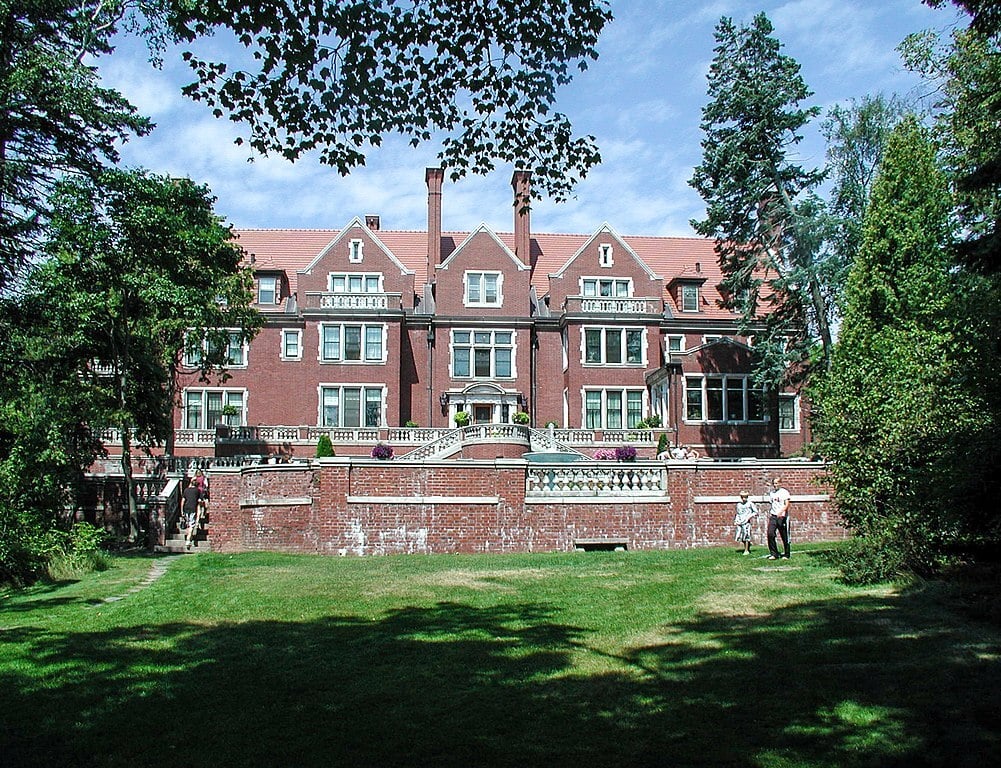
Glensheen Mansion
Glensheen historic estate, August 5, 2006. Photo by Wikimedia Commons user Derek Heidelberg.
Public domain

Postcard of Glensheen from the lake
Holding Location
Articles
More Information
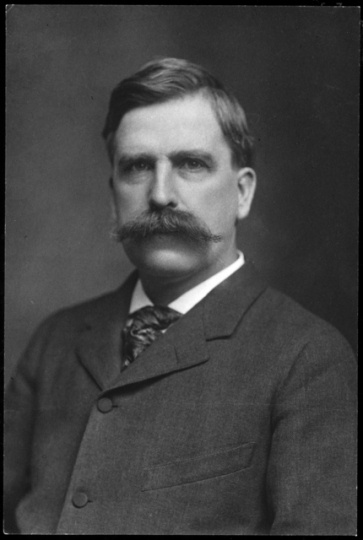
Chester A. Congdon
Public domain
Holding Location
More Information
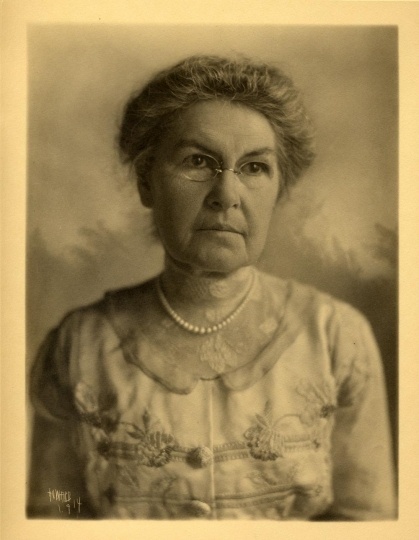
Clara Bannister Congdon
Holding Location
Articles
More Information
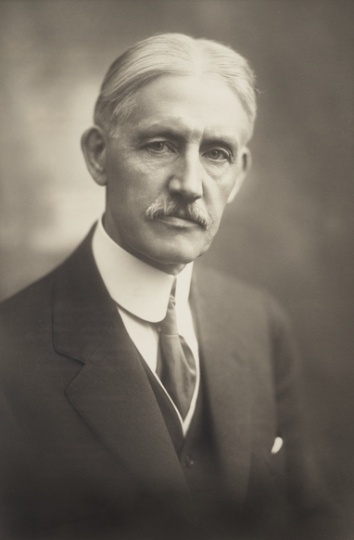
Clarence Johnston
Public domain
Holding Location
More Information
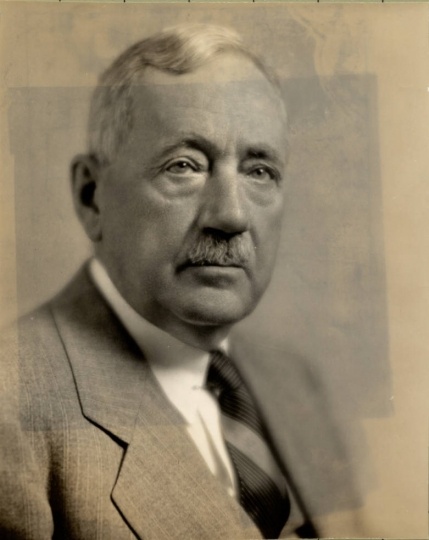
William A. French
Holding Location
Articles

Glensheen from the air
Holding Location
Articles
More Information
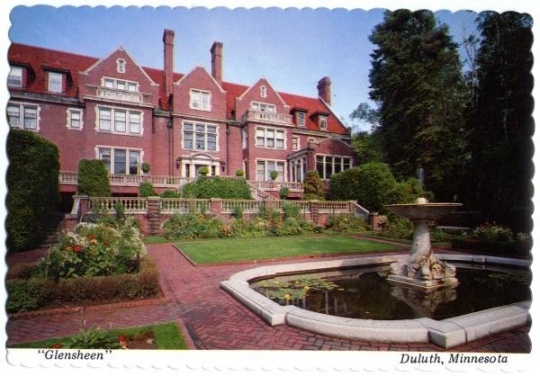
Glensheen from terrace garden
Holding Location
Articles
More Information
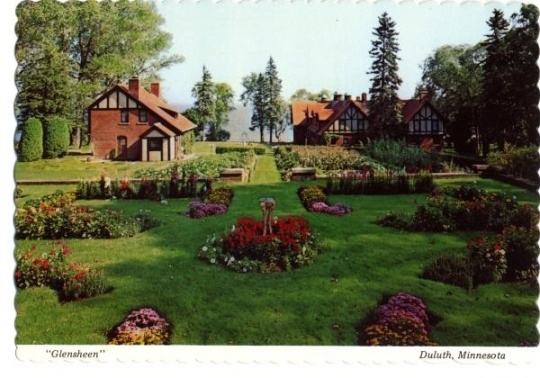
Glensheen gardens and outbuildings
Holding Location
Articles
More Information
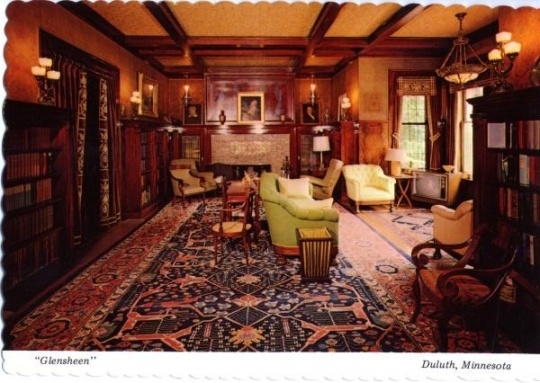
Glensheen library
Holding Location
Articles
More Information
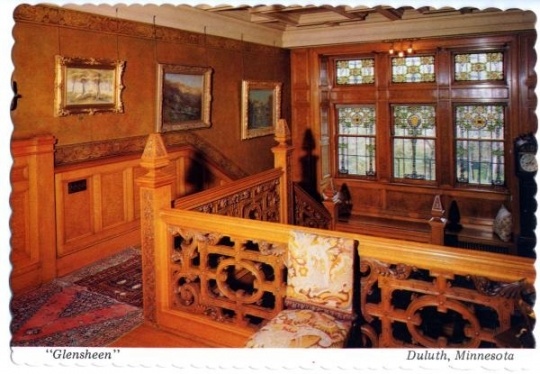
Glensheen staircase
Holding Location
Articles
More Information
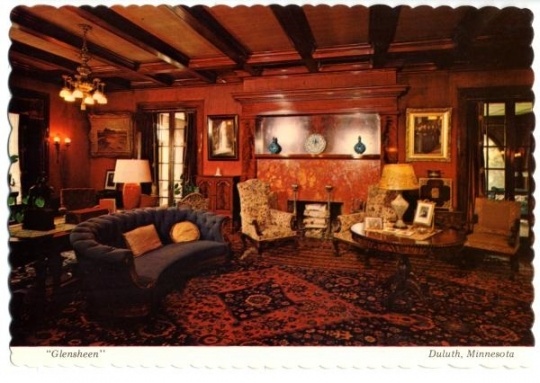
Glensheen living room
Holding Location
Articles
More Information
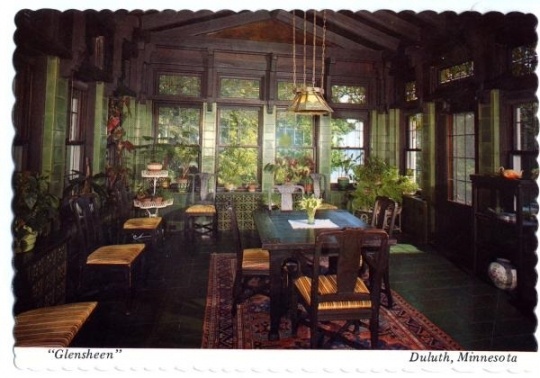
Glensheen breakfast room
Holding Location
Articles
More Information
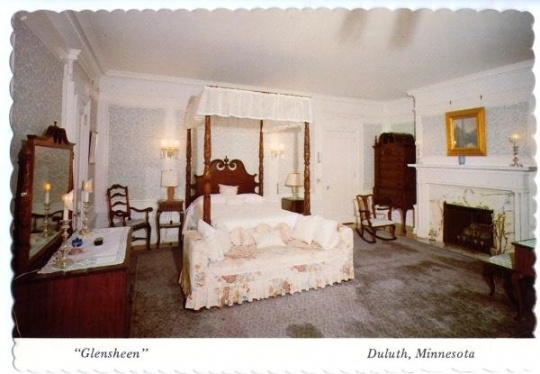
Glensheen bedroom
Holding Location
Articles
More Information

Glensheen, Duluth
Articles
More Information
Related Articles
Turning Point
In 1903, Clara and Chester Congdon decide to build a new house overlooking Lake Superior in Duluth.
Chronology
1871
1879
1881
1892
1894
1903
1908
1908
1916
1932
1950
1977
1978
1979
1983
2015
Bibliography
Berini, Nancy. “Glensheen in a New Light.” Lake Superior Port Cities 4, no. 1 (1982): 29–44.
Dierckins, Tony. “Building the Fortune That Built Glensheen: Chester Congdon and America’s Robber Barons.” Zenith City, May 1, 2015.
Hartman, Dan. “A Legacy Forgotten: Chester Congdon and the North Shore Drive.” The Glensheen Collection.
https://medium.com/the-glensheen-collection/north-shore-drive-and-chester-a-romance-forgotten-8af7c81b131b
Hoover, Roy O. A Lake Superior Lawyer: A Biography of Chester Adgate Congdon. Duluth: Superior Partners, 1997.
Kimball, Joe. Secrets of the Congdon Mansion. Minneapolis: Jackay Publishing, 1991.
Larson, Paul Clifford. Minnesota Architect: The Life and Work of Clarence H. Johnston. Afton, MN: Afton Historical Society Press, 1996.
Millett, Larry. Minnesota’s Own: Preserving Our Grand Homes. St. Paul: Minnesota Historical Society Press, 2014.
Tenuta, James A. “Glensheen Opens Its Doors to the Past.” Lake Superior Port Cities 1, no. 3 (1979): 6–13.
Related Resources
Primary
A/.H332g
Guilford G. Hartley and family scrapbooks, 1882–1960
Manuscript Collection, Minnesota Historical Society, St. Paul
Description: Materials for 1904–1922 cover Hartley’s association with Chester A. Congdon in mining ventures on the Mesabi Iron Range.
U6192
Congdon family papers, 1843–1983
Archives and Special Collections, University of Minnesota, Duluth
Description: Photographs, correspondence, diaries, publications, ephemera, and business, financial, and political records related to the family of Chester A. Congdon, 1853–1916.
https://archives.lib.umn.edu/repositories/22/resources/9334
Secondary
Millett, Larry. Once There Were Castles: Lost Mansions and Estates of the Twin Cities. Minneapolis: University of Minnesota Press, 2001.
Sandeen, Ernest R. St. Paul’s Historic Summit Avenue. Minneapolis: University of Minnesota Press, 2004.
Web
Glensheen. About.
http://glensheen.org/about
Glensheen Collection blog.
https://medium.com/the-glensheen-collection
"Glensheen, the Historic Congdon Estate." University of Minnesota, Duluth.
http://hdl.handle.net/11299/183666
"Historic Glensheen Estate and the Congdon Family." Kathryn A. Martin Library, University of Minnesota, Duluth.
https://libguides.d.umn.edu/glensheen
















